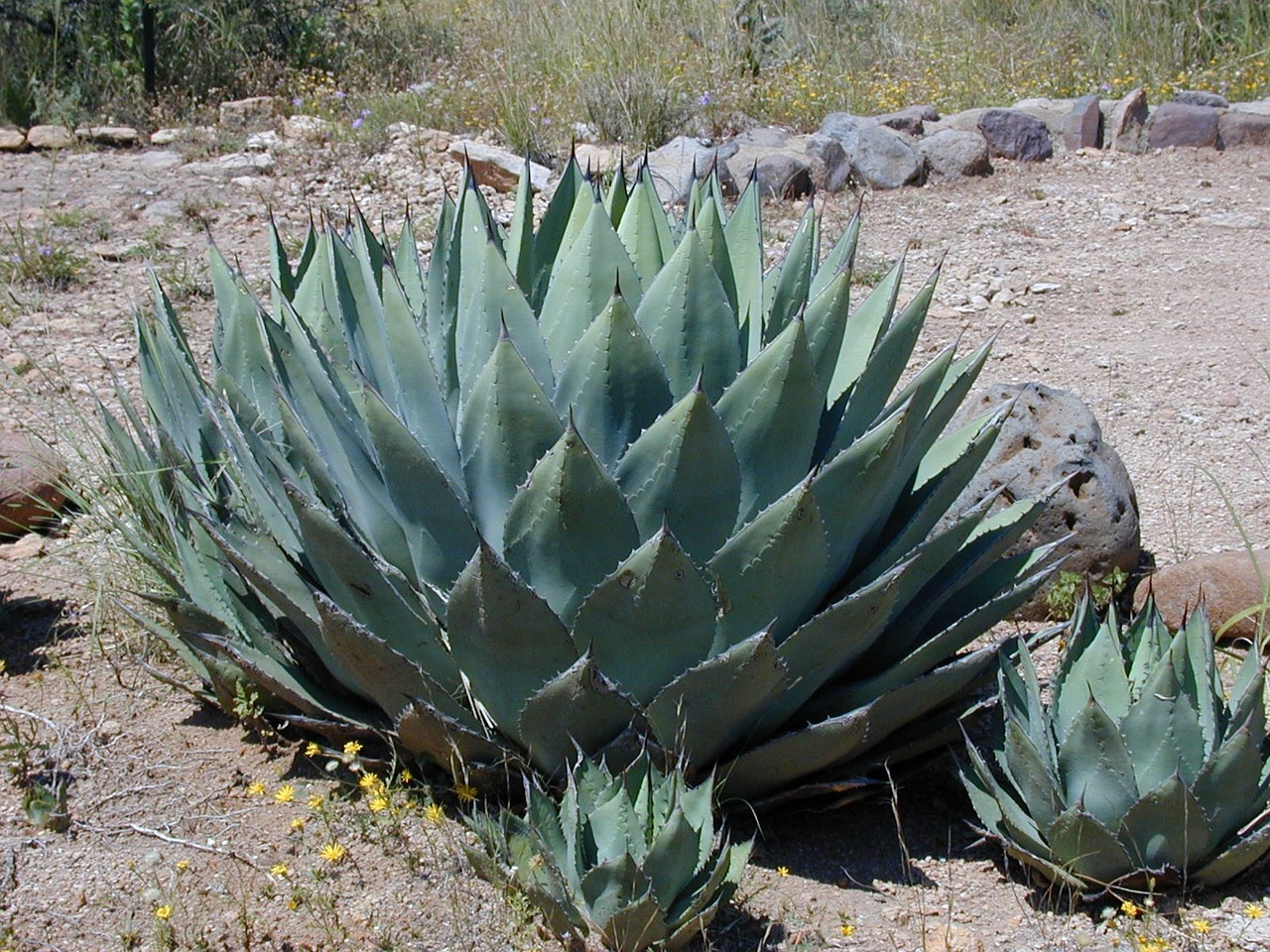
Agave
Agave spp.
Basic Information
🌿 Family: Asparagaceae🗺️ Zone: 7-11
Other Names:
- Century Plant
- Maguey
🌡️ Ideal Temperature : 60°F – 85°F
🔥 Heat Tolerance: Up to 100°F
❄️ Cold Tolerance: Down to 10°F
🌱 Type: Perennial
Layers
- Ground
Functions
- Biofuel
- Fiber
- Ornamental
Pests
No pests associated with this plant.
Description
Agave is a genus of succulent plants known for their rosette of thick, fibrous leaves that end in sharp points. Sizes vary from small species measuring 30 cm (1 foot) to larger ones reaching up to 2.5 meters (8 feet) in height. Agaves are monocarpic, flowering once at the end of their life cycle, which can range from 8 to 30 years. The flowering stalk can grow several meters tall, bearing numerous tubular flowers. After flowering, the main plant dies, but it often produces offsets or "pups" around its base.
🌞💧 **Sun and Water Requirements:**
Agaves thrive in full sun and well-drained soils. They are drought-tolerant and require minimal watering once established. Overwatering can lead to root rot. :contentReference[oaicite:2]{index=2}
✂️🫘 **Methods to Propagate:**
Agaves are commonly propagated by:
- **Offsets (Pups):** Small plants that grow around the base can be removed and replanted.
- **Bulbils:** Some species produce bulbils on the flowering stalk, which can be planted after detachment.
🧑🌾👩🌾 **When to Harvest:**
For species used in fiber or biofuel production, leaves are harvested from mature plants, typically before flowering. In species like *Agave tequilana* (used for tequila), the central "piña" is harvested after 7 to 14 years.
Purpose
- Biofuel: Certain agave species are cultivated for bioethanol production due to their high sugar content.
- Fiber: Agave leaves yield strong fibers, such as sisal, used in ropes and textiles.
- Ornamental: Many agaves are grown for their architectural form and drought tolerance in landscaping.